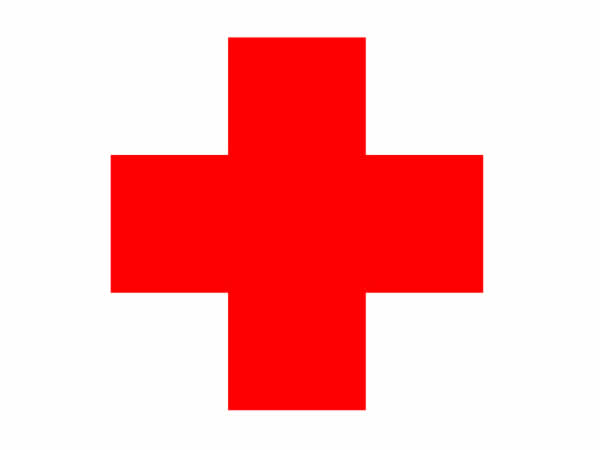Planck E PressCenter Articles
Cui Bono? A Very Important Question.
Date published: 2017-10-24
Date modified: 2022-07-29
Reading time: 00:04:35

The guy is only sincerely atheist when he is in very good health.
Millôr Fernandes
Returning to the monetization of diseconomies or how to make money from trash (as discussed in the article Cash from Trash), let's look at the possibilities of wealth generation with one of the most complicated and frightening types of refuse: hospital waste.
According to the World Health Organization, most hospital waste (75-90%) is non-infectious waste which means it can be treated as general municipal solid waste. The remaining 10-25% are deemed hazardous because they are radioactive, toxic, or infectious.
In the mid-1980s, several reports related to the illegal disposal of hospital waste were made public, but only in the early 1990s, with the AIDS epidemic, that authorities took stricter measures, with higher fines and greater control, aiming to calm the population.
Because of this situation, hospitals today tend to extrapolate safely, determining hazardous waste as about 50% of the total production.
According to Brazilian legislation, hospital waste obeys the following classification:
GROUP A: Residues with the possible presence of biological agents, which because of their characteristics of greater virulence or concentration, may present a risk of infection.
GROUP B: Waste containing chemicals that may pose a risk to public health or the environment, depending on their flammability, corrosivity, reactivity, and toxicity characteristics.
GROUP C: Any materials resulting from human activities containing radioactive nuclides exceeding the disposal limits specified in the standards of the National Nuclear Energy Commission (CNEN) for which the use is improper or unplanned.
GROUP D: Wastes that do not present biological, chemical, or radiological risks to health or the environment, and can be assimilated into household waste.
GROUP E: Sharp or scarifying materials such as razor blades, needles, scalpels, glass ampules, drills, endodontic files, diamond tips, scalpel blades, lancets, capillaries, micropipettes, blades and coverslips, spatulas, and all glass utensils broken in the laboratory (pipettes, blood collection tubes and Petri dishes) and the like.
According to the WHO, a hospital generates 7 to 10 kg of waste per bed per day. In other words, a hospital with 345 beds generates about 1,100t of refuse per year and about 183t (in an ideal scenario) refers to hazardous waste.
Let us consider this total liability as the "diseconomy" and calculate what types of impacts it causes on air, water, soil, and human health and their consequences: soil use; climate changes; depletion of ore reserves, hydrocarbon reserves, ozone layer; human, water, soil toxicity, etc.; always within the strictest observation of the law. Once all the possible impacts of this diseconomy have been determined, we can apply the rules of the ZerO2Nature standard and turn this scary waste into cash. As a unifying agent for the measurement of negative emissions, we adopt the Environmental Impact Potential (EIP). To avoid cutting the dynamics of this text with numbers, we present the scenarios and values of the adopted EIP at the end of this article.
According to statistics from US and US health surveillance agencies in non-OECD countries, the following destination is given to hospital waste:
- 62% is properly deposited in landfills;
- 35% treated at high temperatures;
- 3% is improperly deposited in landfills/dumps.
Returning to our initial example, 1,100t of hospital waste per year, of which about 183t (in an ideal scenario) refer to hazardous waste, the calculation of the environmental impact is as follows:
- Based on the potential environmental impact of hospital waste related to global warming we have 3,371 teq (tonnes equivalent) of CO2, which represents 3,371 F-DTUs, which are ecological credits of the ZerO2Nature system linked to global warming;
- Based on the potential environmental impact of hospital waste in the soil we have 5,984.55 teq of 1-4 dichlorobenzene that represents 5,984 B-DTUs, which are ecological credits of the ZerO2Nature system linked to terrestrial ecotoxicity and 1,471 teq of petroleum that represents 1,471 C-DTUs, which are ecological credits of the ZerO2Nature system linked to the abiotic depletion of fossil fuels;
- Based on the potential environmental impact of hospital waste on human health we have 227,835 teq of 1-4 dichlorobenzene that represents 227,835 B-DTUs, which are ecological credits of the ZerO2Nature system linked to human toxicity.
These calculations refer to a theoretical approach. When we design a project, all the negative emissions have to be computed through objective evidence and discounted from the volume of generated credits.
Another very important factor to consider is the baseline. To be a credit generator, a project must meet two conditions: to withdraw a volume of negative emissions that would not occur in the absence of the project and be additional.
The additionality of the project is established through the breaking of economic, technological, or social barriers; always relative to the baseline.
But, what is a baseline? It is the “business as usual” scenario, or how that type of activity is commonly performed.
So the proper collection and recycling of hospital waste generate ecological credits? Yes. The baseline is to remove refuse from the hospital, transport it to the treatment site, treat 35% at high temperatures and dispose of 62% of the waste in landfills/dumps; with a remaining 3% of the total amount of hospital waste, illegally deposited in Nature.
This being the baseline scenario, what would be the condition of additionality of a project? If the waste is treated in situ, instead of being transported, additionality refers to the fuel saved, both within the global warming scenario and in the scenario of abiotic depletion of fossil fuels. If we ensure, through objective evidence, that all class A, B, and E material is properly disinfected and used as feedstock for another cycle, we also prove additionality and, finally, if this process generates some kind of energy, there is the possibility of obtaining credits related to renewable energy, with the application of the appropriate methodology.
Within the proposed situation, the only credits that would not be obtained would be those related to terrestrial toxicity, since this situation is already contemplated by the baseline.
And finally, we get to the point. We know that the environmental liability or diseconomy caused by hospital waste in the cited example is:
- 3,371 teq of CO2, related to global warming;
- 5,984.55 teq of 1-4 dichlorobenzene, related to terrestrial ecotoxicity;
- 1,471 teq of petroleum, related to abiotic depletion of fossil fuels;
- 227,835 teq of 1-4 dichlorobenzene, related to human toxicity.
Since terrestrial ecotoxicity is already contemplated in the baseline, the following ecological credits are generated within this example:
- 3,371 F-DTU;
- 1,471 C-DTU;
- 227,835 B-DTU.
The current conversion value of the F-DTU is €30; the B-DTU is €40 and the C-DTU is €55.
Therefore, the adequate treatment of 1,100t/year of hospital waste, can generate an additional income for hospitals in the order of €9,295,435.00 related to the generation of ecological credits.
In time: cui bono? means "who benefits?". In this case, all of us, when investing in the health of the Earth.
ZerO2Nature is turning trash into cash.
Keywords
- hospital waste
- environment
- waste management
- human toxicity
- additionality
For further information about Planck E PressCenter, please contact us.
Divulging ingenious solutions
The mission of the Planck E PressCenter is to promote ideas, products and theories that have not yet reached the mainstream, as captured in our first release Eccentrics and their Ingenious Solutions.
Newsletter
Sign up for our weekly Planck E Newsletter, complete with the latest ingenious solutions.
Click here for the signup form.
Submit your ingenious solution
We encourage you to submit your ingenious solution, article, press release or "out of the mainstream" technical idea for publication on the Planck E PressCenter. Please send us an e-mail to presscenter@planck-e.com and enquire how.
To learn more about holistic engineering, solutions inspired by nature, monetization of diseconomies, training courses or the incorporation of Being Data to your day-to-day, please follow us on the social networks.

